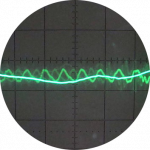Low COP and unevenly heated rooms with 12kW Samsung AE120MXTPEH / AE260TNWTEH
Hi all,
My family got installed a 12kW Samsung heat pump (HP) with water underfloor heating (UFH). I am helping troubleshoot it, because its not performing as expected.
Problems:
- Some rooms are colder than others
- COP is between 2 - 2.6 with not huge difference if its -5 or +10C outside, based on (heat production) / (power consumption) from the Samsung controller on the hydro unit
- with higher flow rate of about 1.9 m3/h (32 l/m) the HP short cycles (the power consumption of the outdoor unit goes to 0 and starts at full power of 3-4kW initially)
Here are the system components:
- heat pump - AE120MXTPEH - engineer calculated we need 9kW but the installer put 12kW; configured to work on water law (weather compensation) using default (-10 +15 / +40 +25)
- hydro unit - AE260TNWTEH
- Accessory kit (eev kit): MXD-E24K232A
- indoor units connected to the heat pump - AE056TNXDEH / AE028TNXDEH
- 11 ufh circuits using 840 meters of f16х2mm pipe (16mm/0.629 inches diameter, 2mm/0.07 inches walls) laid 10cm apart
- current secondary water pump - DAB Evosta 3 at Proportional Differential Pressure setting
- DN25 low loss header (LLH)
- manifold with flow meters and Engo e30nc230 thermal actuators and thermostats (currently thermostats are not installed)
- thermostats will be used as thermal limiters (prevent the room from overheating). We plan to use it as open loop controlled by water law (weather compensation)
Monitoring
- leave water temperature (LWT) and return water temperature (RWT) of HP and UFH
- power consumption of hydro unit and heat pump using shelly
- temperature and humidity in most of the rooms and also outside
My observations
Attached thermometers on the LLH and UFH circuit might have 5-7 dT when HP circuit can have 2-3 dT. Also temperatures usually dont match between LWT / RWT on HP and UFH. My understanding is that mixing between LWT and RWT is happening because of flow rate mismatch between secondary and primary water pump.
Tried changing the flow rate of the secondary pump in the range of 0.9 m3/h to 1.9 m3/h (15 l/m to 32 l/m) but the heat pump began short cycling.
Questions
- How to balance the UFH circuits if i dont know the exact length of the pipes. Should i set each circuit to have dT of 5 because thats the dT of the heat pump?
- What secondary water pump with PWM can replace DAB Evosta 3, so no mixing of water occurs in the LLH? Samsung install guides recommend GRUNDFOS UPM3 25-75 for 9kW and WILO STRATOS PARA 25/1-9 for 16kW but there is nothing for 9kW.
I had to recently learn what heat pump is or how heating works in general. I might be misunderstanding some concept or terminology and provided as much description as possible for you to correct me and point me in right direction.
Thank you
I have a Samsung Split HP with Hydro unit also but a much older model (Gen 4) which works well. From your description you are not too dissimilar to my original installation, except I had a buffer tank. The first thing you should know is that you have a variable flow PWM pump in the hydro unit which is capable of driving your whole system efficiently. You have a UFH only system with all loops in parallel, therefore there is no reason whatsoever to have an LLH and secondary pump. Its lunacy. The Samsung diagrams specify this when there is a mixture of UFH and radiators, but even then it is not necessary, as I had this daft arrangement before I changed it. The PWM pump should drive the manifold directly (no mixer) and then set the flows accordingly. You have over 6m pump head to play with. UFH loss should be nowhere near that. There are cheap Caleffi clip-on thermometers that you can buy for the 16mm return loop pipes to measure the return pipe temperatures. Set your dT’s with the help of these if you do not know the lengths.
Your pipe spacing is very close which is good as it will provide quicker heat up. I believe that the Samsung flow switch operates at 7 l/min which is the minimum switch on flow (check your documentation). That means you have 25 l/min to play with over and above this if your heat pump is not too over-sized. Instead of full open loop, what I did was this. Open enough secondary loops (scullery, etc) to provide minimum flow to avoid dreaded E911 flow alarm. For the primary loops, use thermostats (as you have them apparently) to provide full control of temperature. For example, if you have a wood burner, kitchen cookathon, lot of people around or sudden increase in OAT with good solar gain, the thermostats will turn zones off automatically. Thermostats also allow you to program switch off zones for Time of Use tariffs and provide night setbacks. I do not believe in uncontrolled open loop systems but it is your choice, of course. The Samsung PWM will control the change in flows (at least mine does).
Note that there is no need for an LLH/secondary pump for warranty purpose in your case as there is no danger of malfunction. Quite the contrary. Talk to your installer. Hope this helps.
Private individual. No affiliation with commercial "Heat Geeks" of same coincidental name.
First, a disclaimer. I am not associated with the Heat Geek podcaster of the same name. I chose the name before I knew of the existence of the other. One is not allowed to change it. Unfortunate coincidence.
I have attached information for the thermometers. They come in a box of 10 with a syringe full of thermal grease. You have 11 pipes which is a bit awkward but I would get 2 boxes as they are cheap enough and donate the excess to a friend. You should put one on a flow pipe and ignore the Samsung reading. There is a small coupling loss when connected to a pipe so this will be cancelled by reading the difference between flow and return thermometers. You can put one on each zone flow. It will not add any extra information but it looks good. 😊
For setting up you should identify the lowest flow of the controlled zones. Subtract this from 8 which will give you the flow for the open loop(s). This should be a non-essential one. You can cheat by increasing the open loop flow for a 3C dT to make it a sacrificial loop. This will reduce the maximum heat output but, if it is a secondary area, it will not matter. You will find that the zones will switch off randomly and, with good thermal mass and insulation, will stay off a while. Use 1C hysteresis. Therefore the HP will run at partial load frequently with hopefully long cycles like mine and you have full room control. It depends on the heat loss profile of the house, of course, if not too lossy. The setting of the WC temperatures will depend on this.
To estimate pipe length, you need 10m of pipe per sqm for 10cm spacing. So, it sounds like the property is around 90 sqms and quite lossy. You can estimate each room’s pipe length from the area and add a bit for flow and return from manifold. It would help if you can explain where the loops go.
Otherwise it looks like you shouldn’t have too much of a problem. Just keep it simple.
Private individual. No affiliation with commercial "Heat Geeks" of same coincidental name.
One more thing. Do Samsung explain how defrost works on your Hydro unit? Does it use heat from the hot water tank which would make sense? If not, you may need to add a volumizer for safety. I guess the LLH is small on content for a 2 pipe connection. The UFH has 0.12l per metre of water so you have >100l water content. Some loops would probably always be open at low temperature but maybe an extra 30l would not go amiss.
Private individual. No affiliation with commercial "Heat Geeks" of same coincidental name.
Just found out that flow limit for 12kW HP is 12 l/min. 9kW HP is 7 l/min. Shame. Less flexibility.
Private individual. No affiliation with commercial "Heat Geeks" of same coincidental name.
Posted by: @heatgeekFirst, a disclaimer. I am not associated with the Heat Geek podcaster of the same name.
So you’re not Adam Chapman? 🤣
Get a copy of The Ultimate Guide to Heat Pumps
Subscribe and follow our YouTube channel!
Hi, @heatgeek . Thank you for getting back to me, i appreciate your well thought suggestions. Apologies for the 8 month delay - life got in the way.
original project was done by a professional heating engineer and included underfloor heating, radiators, buffer tank and separate water tank. What we have is not based on that project but mimics it (buffer tank => LLH, radiators for AC units, external tank => Samsung climate hub)
I installed as you suggested thermometers on the manifold for each loop and on the LLH and will tweak dTs when heating season begins.
My heat loss at -11 and 22 inside (dT 33) is calculated as 6800 Watts. I dont know if heat loss is linear - meaning at dT 33 is 6800 and at dT ~16 is 3400.
If it is linear and because my heat pump can generate at minimum 3.75 kW of heat energy based on docs it would mean that at around 3-4 degrees outside the heat pump will have uninterrupted work if nothing like sun or indoor activities like cooking generate additional heat as you noted. Calculation: 22 - 3750/(6800/33) = 3.8 C outside
To transfer 3750 Watts of heat on manifold side of LLH based on Q(kW) = m * SHC * dT:
- Option 1 is 0.9 m3/h = 0.25 l/s which gives dT=3.75 / (4.18*0.25) = 3.59 C
- Option 2 is 1.3 m3/h = 0.36 l/s which gives dT=3.75 / (4.18*0.36) = 2.49 C
- Option 3 is 1.7 m3/h = 0.47 l/s which gives dT=3.75 / (4.18*0.47) = 1.90 C
The above options are based on the 3 speeds (0.9, 1.3 and 1.7 m3/h) i usually get on DAB Evosta 3 at Proportional Differential Pressure setting. At Option 2 and 3 the system gets noisy at the manifold.
Using same formula Q(kW) = m * SHC * dT i am trying to calculate what dT to set to the heat pump so the fixed speed (no PWM) on DAB Evosta 3 matches and there is little to no water mixing in the LLH:
m = (3.75 kW / 4.18) / dT
at dT 4: m= 0.9/4 = 0.23 l/s = 0.83 m3/h
If all of my assumptions and calculations are right because i am googling stuff and have no prior education it will mean that i will need to get:
- heat pump dT=4 to get 0.83 m3/h flow on the heat pump side of the LLH
- manifold dT=3.59 and get flow around 0.9 m3/h
to make the system work relatively smooth.
Proportional Differential Pressure setting changes the flow rate based on my loops getting more or less open which makes it difficult to get the right flow at right dT on manifold.
I still dont know what the Water Law (Weather compensation) settings should be.
The heat pump requires 34 l/m (2.04 m3/h) flow which is way more than my secondary pump can do, given my loops need to achieve reasonable dT to transfer the minimum heat or short cycling will still occur. This leaves me using higher HP dT to slow the flow on HP side.
I think the installer oversized the heat pump massively.
I will tweak settings when the heating season begins.
Huge thanks to Nick Kirwan from Samsung Support if he ever reads this.
Posted by: @bonoboMy family got installed a 12kW Samsung heat pump (HP) with water underfloor heating (UFH). I am helping troubleshoot it, because its not performing as expected. I will answer at high level without detailed explanation, ask about what you dont understand
Im going to try to take a practical approach to this, ie what can you do with what you have. Im also going to take it in steps.
Posted by: @bonoboSome rooms are colder than others
So you need to balance the emitters (loops). This is an essential part of setting up a system
Posted by: @bonoboCOP is between 2 - 2.6 with not huge difference if its -5 or +10C outside, based on (heat production) / (power consumption) from the Samsung controller on the hydro unit
This is most likely due to 'distortion' in the buffer (flow temp to emitters is less than flow temp from heat pump), WC setting too high and/or vastly oversized heat pump (~12kW depending on the detailed specs vs 6.8kW)
Suggest (a) to measure the flow temp into the buffer from the heat pump and from the buffer to the emitters, when its operating at a reasonable flow temp. For each degree of difference you are spending about 3% extra on fuel
Regarding WC (water law in Samsung speak), what are the current settings? In general you want to start with something like 25C FT@20C OAT at the high OAT end, and your design FT @ your design OAT at the low OAT end, then reduce the low OAT end until the house is just warm enough when the heat pump is operating 24*7. Do this slowly, a degree every 24hrs. It takes time.
Regarding oversized heat pump the only option here is to 'batch heat', ideally when leccy is cheap. However I would regard that as a later tweak once the basics are sorted. You may find batch heating in the shoulder season and 24*7 in the high season is your best bet.
Posted by: @bonoboMy understanding is that mixing between LWT and RWT is happening because of flow rate mismatch between secondary and primary water pump.
Using same formula Q(kW) = m * SHC * dT i am trying to calculate what dT to set to the heat pump so the fixed speed (no PWM) on DAB Evosta 3 matches and there is little to no water mixing in the LLH:
You are correct that mixing is occurring and this is causing a loss of efficiency, see my question above. You are also correct that matching speeds is the way to reduce this (better still is remove the buffer altogether, but I guess you aren't ready to do that yet). You have the right idea about flow rate calculations, but your heat pump may well complain if the flow rate is insufficient for its max output. In general higher flow rates/lower deltaTs are anyway better.
Because a perfect match of flow rates either side of the buffer isnt possible aim for slightly greater volume flow rate from the HP than the volume flow rate to the emitters. This will push the thermocline to the bottom so the flow temps either side of the buffer should be close to equal. Dont worry too much for now about delta T between flow and return, concentrate on the delta across the buffer. You may need to iterate this after balancing the loops.
Hope that helps
4kW peak of solar PV since 2011; EV and a 1930s house which has been partially renovated to improve its efficiency. 7kW Vaillant heat pump.
@jamespa thank your for your input.
We used the heating today. I managed to balance the loops at same dT and rooms are in same range of 5 degrees and no longer there are cold rooms.
Balancing a bit the flows to and out of the Low Loss Header (LLH) requires me to put Dab Evosta 3 on 2nd (~1.3 m3/h) or 3rd (~1.7 m3/h) speed which makes a lot of noise.
COP improved for now. Its in range of 3.2 to 3.6 At one point of tweaking stuff it was above 4 but for short period.
I dont have in the project the expected water temperature at -11 outside and 22 inside that will generate 6.8 kW of heating. Not sure how to configure weather compensation/water law in this case because old settings were before i balanced the loops and lowered the mixing in the LLH. Maybe start from Samsung default -10 / 15 outside 40/25 water?
Posted by: @bonoboBalancing a bit the flows to and out of the Low Loss Header (LLH) requires me to put Dab Evosta 3 on 2nd (~1.3 m3/h) or 3rd (~1.7 m3/h) speed which makes a lot of noise.
Where is the noise coming from. If its the pump then perhaps somehow put some insulation around the pump. If its the rads, is it the valves. or the pipes? Noise is bad because it indicates something somewhere is restricting flow so you should try to track this down and if possible fix, unless its just the water pump whirring.
The flow rates must be sufficient to match the pump capacity. With a 12kW pump at DT5 you need therefore need 12000/4200/5 l/s = 2cum/hr. This is another downside of an oversize heat pump (I think you said your loss was ~6kW). Dealing with this is a reason to fit a buffer, but this is simply applying a patch to a bad design!
You may be able to reduce the water pump speed on the heat pump side to match the actual loss, particularly if you clamp its output by employing low noise mode - or any other mechanism the Samsung has to clamp output. This depends on whether the setting is available and/or the heat pump complains. Worth having a look around at this to see what's possible because you don't need 1.7cum / hr to transport 6kW!
Posted by: @bonoboNot sure how to configure weather compensation/water law in this case because old settings were before I balanced the loops and lowered the mixing in the LLH. Maybe start from Samsung default -10 / 15 outside 40/25 water?
That's not a bad starting point. Alternatively, in principle with balanced LLH you should be able to reduce the low OAT end of the WC curve from the position when it was unbalanced. If you cant then something is a bit odd. Hopefully you will end up at LWT=35 or thereabouts at your design temp, you should if the UFH pipe spacing has been properly calculated!
4kW peak of solar PV since 2011; EV and a 1930s house which has been partially renovated to improve its efficiency. 7kW Vaillant heat pump.
Posted by: @jamespaWhere is the noise coming from
i cant trace it. Near the pumps in the basement it seems its less noisy with this humming sound compared to the room above where the pumps are. Also this same room shares a wall with the manifold.
If i go above 0.9 m3/h it can be heard like a neighbour is vacuuming.
For now i put insulation on some places where the copper pipe going to the collector was touching the metal anchoring that probably was passing the vibration to the house. Noise now reduced by half.
---
system is not balanced but if i can turn off the HP when heat is not needed all will be good.
dT HP side of LLH is around 2.1 C
dT manifold side of LLH is around 3 C
HP hot water is 0.5 C hotter than what is given to the manifold
the HP return water is 1.5 C hotter than what the manifold returns
This means there is mixing. The more i get the speed of the additional pump up the less mixing happens. At some point LWT HP is equal to LWT LLH->Manifold and only RWT HP is hotter. But this wastes energy for water circulation and generates excess noise.
---
On power consumption side:
- manually changing water speeds and delta T i managed to get COP of 4.8 i think it was. When the installers put thermostats and "configured" the loops by opening them all at max the COP was 0.8 that day 🤣 impressive 🤡
- i added a wifi relay and automated it to turn off/on based on room temperature the additional water pump. Downside is that every hour at least once the water on the HP side of the LLH gets cold enough that the HP turns on and cycles for 5 minutes a few liters of water trying to pass heat into it.
I plan to try to connect the relay on the thermostat inputs of the indoor body of the HP and allow it to control the HP directly to avoid these short cycles.
Anyone with experience connecting external thermostat to Samsung TDM HP to give me suggestions on which terminals i need to connect?
Also how a non PWM water pump should be connected to the Samsung TDM indoor body so both turn on/off at same time?
- 26 Forums
- 2,342 Topics
- 53 K Posts
- 185 Online
- 6,000 Members
Join Us!
Worth Watching
Latest Posts
-
RE: Who's your electricity provider and what's your tariff?
I've not heard anything about this, as yet. I get the ...
By Sheriff Fatman , 4 hours ago
-
Agree with @majordennisbloodnok on the setbacks. We hav...
By ChandyKris , 6 hours ago
-

RE: Advice on internal circulation pump noise
I agree with @jamespa that your buffer tank and seconda...
By GrahamF , 7 hours ago
-

RE: Heat Pump Heats the House… But It’s Not Cosy. Emitter Changes or System Tweak?
A quick Google search showed that building regulations ...
By GrahamF , 7 hours ago
-
RE: Octopus Cosy Heat Pump Owners & Discussion Thread
@agentgeorge I first heard (read) about it on FB this m...
By AndrewJ , 7 hours ago
-
RE: New Fogstar 15.5kWh upright solution
It is a matter of luck. 2ith Fogstar "instructions", to...
By Batpred , 7 hours ago
-

RE: Speedcomfort radiator fans
@deltona the way the links were added broke the page. A...
By Mars , 8 hours ago
-

RE: Setback savings - fact or fiction?
I agree! Even more so if we get an answer! But the chal...
By cathodeRay , 10 hours ago
-

RE: Refrigerant R32, is it now banned in the EU from 1st Jan 2027 for monobloc ASHPs?
This has been delayed from what I believe to be this ye...
By dgclimatecontrol , 13 hours ago
-
RE: Are We Sleepwalking Into Another Race to the Bottom?
this is why I provided current flow temperatures in the...
By ksim , 14 hours ago
-

RE: Why Millions of UK Homes Struggle With Heat Pumps
There's many homes that would be quite a disruption for...
By dgclimatecontrol , 14 hours ago
-
RE: Ecodan unable to hit legionella target temp - what's the consensus?
@rhh2348 ...maybe this option is what you want? Alter...
By benson , 14 hours ago
-

RE: Free Ecoheat Heat Pump Install
@old_scientist This does make the unit smaller as the b...
By dgclimatecontrol , 14 hours ago
-
RE: Ecodan - Legionella Operation Time and Target Temperature
@old_scientist hiya mate, did you ever get to the botto...
By 9jwr9 , 20 hours ago
-
RE: Configuring third party dongle for Ecodan local control
@majordennisbloodnok I think the HPDHD diagnosis may be...
By Sheriff Fatman , 1 day ago
-

RE: External pipework insulation
I don't think we can tell from a photo whether your exi...
By Transparent , 1 day ago
-
RE: Controlling Daikin Altherma via P1P2 and Home Assistant
@majordennisbloodnok That’s correct. I can’t find anywh...
By weoleyric , 2 days ago
-

RE: A Smarter Smart Controller from Homely?
@papahuhu I hope you get a swift resolution. Regards, T...
By Toodles , 3 days ago





